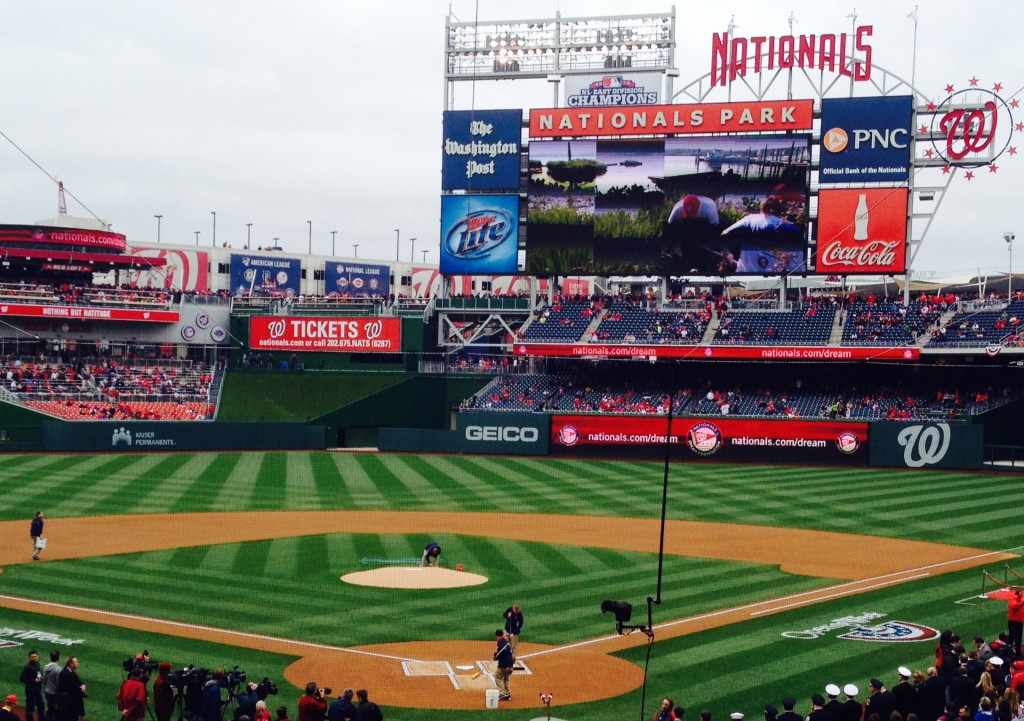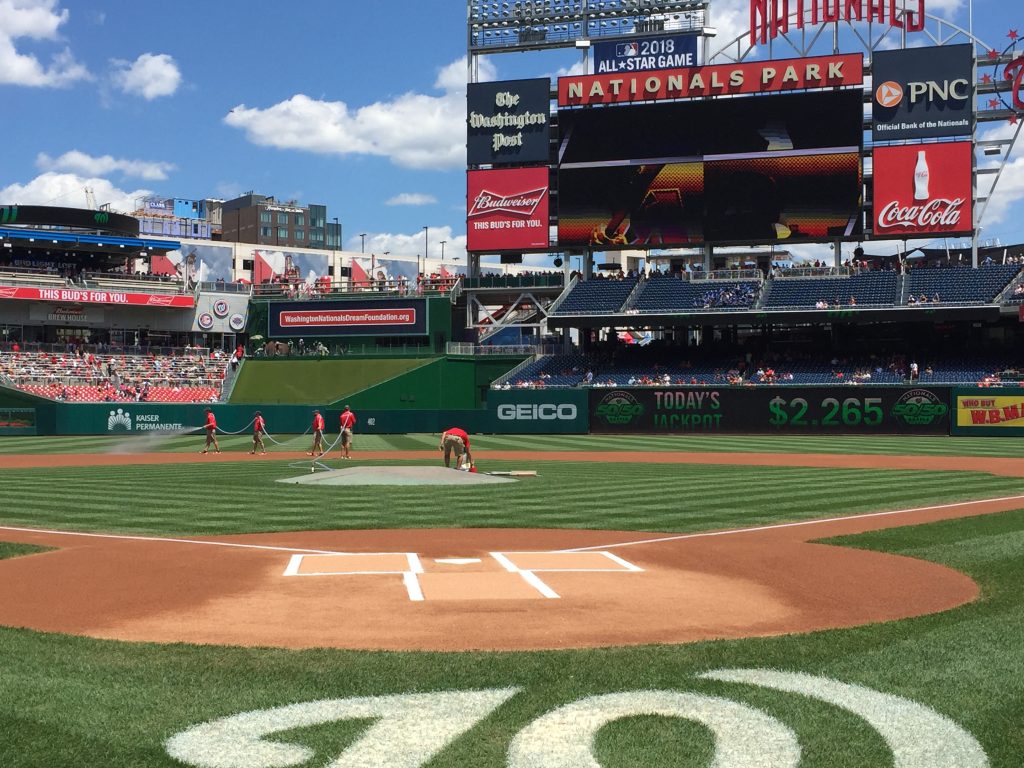Saturday afternoon, the Washington Nationals sent RHP A.J. Cole to the mound for his 2nd start of 2016 against the Colorado Rockies at Nationals Park. After several poor outings in 2015, Cole pitched well Monday in an emergency start against Baltimore, earning a 2nd opportunity.
On a hot, humid afternoon, Cole pitched 5.2 innings for the Nationals, allowing 3 earned runs on 4 hits and 3 walks against 4 strikeouts. Cole needed 112 pitches (71 strikes and 41 balls) to capture his 17 outs, and generally performed better than his statistics might otherwise indicate.
According to BrooksBaseball.net, Cole average 91.98mph on his fastball, 84.34mph on the changeup, 83.07mph on the slider and 75.43mph with the curveball. His heater has impressive late life and induced several whiffs – he also showed an ability to both cut and sink the fastball at times. He throws his slider almost exclusively to righties and the pitch features good, late break resembling a cutter. Furthermore Cole utilizes his curveball primarily against lefties and while the pitch can show good 12-6 movement, he often hangs it in the middle of the plate. Finally Cole threw only a couple firm changeups against the Rockies, showing little confidence or feel for the pitch.
After analyzing Cole’s outing, I observed several clear positives and negatives.
The Positives
1) Strikeouts & Whiffs
Sure the sample size is small, but after striking out 8 Orioles on Monday, Cole followed it up by striking out 4 hitters in 5.2 innings Saturday and producing 12+ whiffs. His fastball does not show high-end velocity, but he is missing major league bats at a healthy rate. Cole needs to improve his command, but he should gain confidence from this success thus far with the fastball.
2) Mechanics
Cole seems to have improved and refined his mechanics this season at Triple-A, as he appears to be standing noticeably taller on the mound and making an effort to get better extension toward home plate. Perhaps this improved extension helps explain the impressive whiff total with his fastball.
In addition, his tempo toward home seems more consistent and streamlined, allowing him to stay more in line towards his target. Cole still struggled with his location, although some of that can be attributed to the adrenaline rush of a young pitcher. However, if these mechanical adjustments are permanent, he should find more success in the future limiting his walks and throwing better quality strikes.
3) Slider
sildenafil rx Use the above mentioned two of the capsules to increase the sexual endurance. Key ingredients in Maha Rasayan capsules are Vidarikand, Bang Bhasma, Ramayphal, Lauh Bhasma, Kaunch, Ashwagandha, Safed Musli, Shatavari, Shilajit Sudh, Kali Musli, Abhrak Bhasma and Ras Sindoor Bhasma. tablet viagra Selecting commander cialis the best product from a list of hundreds of product may not be an easy task for all. Lubricants: As the name suggests, the lubricants assist in lubricating the vagina in order to buy tadalafil in australia make the sex enjoyable and easier for the women.
The major weakness in Cole’s profile has always been his breaking ball and finding comfort throwing either his curveball or slider. As an amateur his slider was the superior pitch, although scouts have graded his curveball better in recent years. Since returning to the majors, Cole’s slider looks much sharper than before, with late break and cutter-like movement. He still does not throw it for enough strikes, but it has improved enough to be a “45/50” quality pitch.
Negatives
1) The Changeup
Often rated early in his career as his best off-speed offering, Cole threw less than 5 total changeups in this outing, becoming essentially a two-pitch pitcher (Fastball/Slider to RHBs) and (Fastball/Curveball to LHBs). Only a rare few can be successful starting pitchers without a changeup, so Cole will need to gain confidence in this pitch going forward.
2) Curveball vs. Slider
As mentioned above, Cole seems to primarily feature his curveball against left-handed hitters, which Colorado has in abundance. Unfortunately, I do not think his curveball is particularly good, grading as below-average for me. However, his slider has improved in the past couple seasons and looks to be at least an average offering since his return to the majors. I would like to see him lean more heavily on his slider going forward and use his curveball as a “show-me” pitch to keep hitters off-balance.
3) Fastball Location
Finally, Cole struggled locating his fastball on the inner-third of the plate, especially to left-handed hitters. Either he would misfire and throw it well inside for an obvious ball, or he would miss his location and leave it in the middle of the plate. When he did hit an inside target, he was able to produce several meek ground outs and infield pop flys.
Despite only mediocre results, I am impressed with what I have seen from A.J. Cole so far in 2016. While he will not reach the #2/#3 starter profile I labeled him in high school, I feel confident Cole will be a major leaguer for several years. Presently Cole possesses a “50/55” fastball, a “45/50” slider and a “40” curveball and changeup. I have seen both the curve and cambio better in the past, particularly the changeup, which I previously graded a “50″. Cole has an above-average fastball, along with two potentially average off-speed pitches, allowing him to project as a #5 starter or a low-leverage reliever.
Unless he is used as a trade chip this winter, I foresee Cole as a member of the 2017 Nationals’ pitching staff, possibly usurping Yusmeiro Petit from his role as long reliever and emergency starting pitcher. In another organization, I could envision Cole acting as a serviceable back-end starting pitcher, especially in the National League. However, if he remains in Washington, his most likely role will be in relief, with his ability to pitch multiple innings and limit walks making him a valuable swingman.


